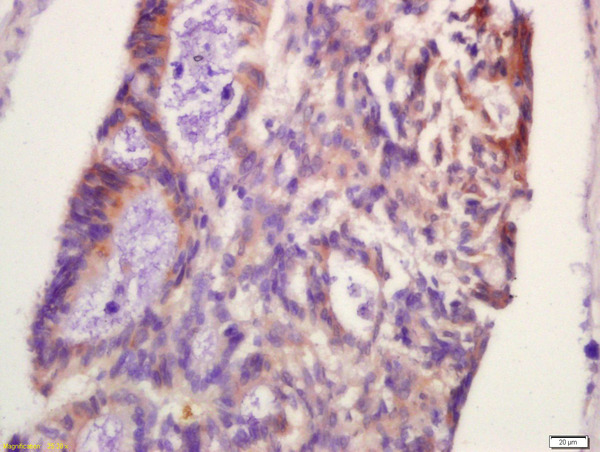
All lanes use the Antibody at 1:3K dilution for 1 hour at room temperature.
Anti-PFKFB3 Monoclonal Antibody
M02382
ApplicationsFlow Cytometry, ImmunoFluorescence, ImmunoPrecipitation, Western Blot, ImmunoCytoChemistry, ImmunoHistoChemistry
Product group Antibodies
TargetPFKFB3
Overview
- SupplierBoster Bio
- Product NameAnti-PFKFB3 Monoclonal Antibody
- Delivery Days Customer9
- ApplicationsFlow Cytometry, ImmunoFluorescence, ImmunoPrecipitation, Western Blot, ImmunoCytoChemistry, ImmunoHistoChemistry
- CertificationResearch Use Only
- ClonalityMonoclonal
- Clone IDADII-16
- Gene ID5209
- Target namePFKFB3
- Target description6-phosphofructo-2-kinase/fructose-2,6-biphosphatase 3
- Target synonymsIPFK2, PFK2, iPFK-2, 6-phosphofructo-2-kinase/fructose-2,6-bisphosphatase 3, 6-phosphofructo-2-kinase/ fructose-2,6-bisphosphatase, 6PF-2-K/Fru-2,6-P2ase 3, 6PF-2-K/Fru-2,6-P2ase brain/placenta-type isozyme, PFK/FBPase 3, fructose-6-phosphate,2-kinase/fructose-2, 6-bisphosphatase, inducible 6-phosphofructo-2-kinase/fructose-2,6-bisphosphatase, renal carcinoma antigen NY-REN-56
- HostRabbit
- IsotypeIgG
- Protein IDQ16875
- Protein Name6-phosphofructo-2-kinase/fructose-2,6-bisphosphatase 3
- Scientific DescriptionBoster Bio Anti-PFKFB3 Monoclonal Antibody catalog # M02382. Tested in WB, IHC, ICC/IF, IP, Flow Cytometry applications. This antibody reacts with Human, Mouse, Rat.
- Storage Instruction-20°C
- UNSPSC12352203
References
- Zhao Q, Li J, Wu B, et al. Smart Biomimetic Nanocomposites Mediate Mitochondrial Outcome through Aerobic Glycolysis Reprogramming: A Promising Treatment for Lymphoma. ACS Appl Mater Interfaces. 2020,12(20):22687-22701. doi: 10.1021/acsami.0c05763Read this paper








